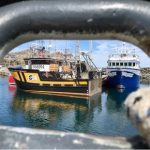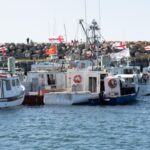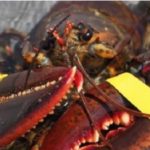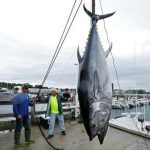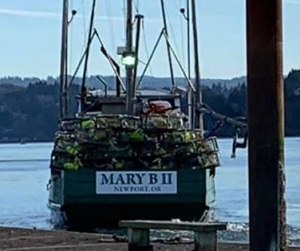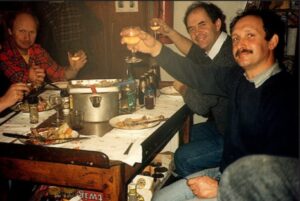Tag Archives: commercial harvest
Area commercial harvest reaches over 438,000 salmon
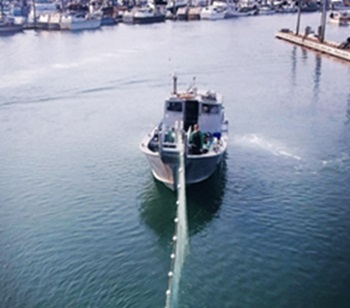 When state fisheries biologists shut down the Copper River commercial salmon for two 12-hour openers on June 3 and June 8 retail markets in Anchorage ran out of the popular Copper River fish, making way for the fresh catch of Cook Inlet sockeyes which were selling at $14.99 a pound. The decision to close those fisheries was that river waters were low and very cold, and the migration into rivers was running late, said Alaska Department of Fish and Game fisheries biologist Jeremy Botz, in Cordova. But then ADF&G opted to allow a 12-hour opener on Saturday, June 8, which brought in 338 deliveries with an estimated 74,296 sockeyes, 2,724 chum, 493 Chinook and 434 pink salmon. more, >>CLICK TO READ<< 07:40
When state fisheries biologists shut down the Copper River commercial salmon for two 12-hour openers on June 3 and June 8 retail markets in Anchorage ran out of the popular Copper River fish, making way for the fresh catch of Cook Inlet sockeyes which were selling at $14.99 a pound. The decision to close those fisheries was that river waters were low and very cold, and the migration into rivers was running late, said Alaska Department of Fish and Game fisheries biologist Jeremy Botz, in Cordova. But then ADF&G opted to allow a 12-hour opener on Saturday, June 8, which brought in 338 deliveries with an estimated 74,296 sockeyes, 2,724 chum, 493 Chinook and 434 pink salmon. more, >>CLICK TO READ<< 07:40
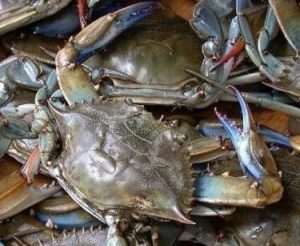
Maryland to restrict crabbing, including first-ever limits on harvest of male blue crab
Regulations issued this week, to be in effect from July through December, will limit commercial watermen to at most 15 bushels a day of male crabs in August and September. And the regulations will tighten existing restrictions on how many female crabs watermen can catch. The changes come weeks after an annual survey of Chesapeake blue crabs,,, That state fishery managers moved to limit even the harvest of male crabs demonstrates the gravity of the situation. Limits are typically only imposed on female crabs as a means of ensuring enough of them to survive to spawn, but with a more than 60% decline in the overall estimated blue crab population since 2019, scientists and representatives from the seafood industry are signaling that more protections are needed to help boost crab reproduction. >click to read< 16:02
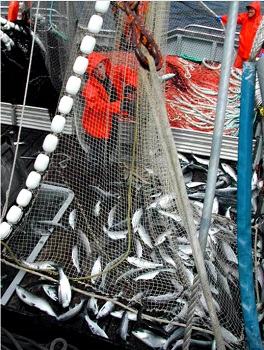
Survey says processors are beefing up for record Bristol Bay run, but it still might not be enough
If the state’s forecasts for the 2022 Bristol Bay sockeye run are even close to accurate, there could end up being millions more fish to catch than anyone is willing, or able, to buy. A survey conducted in January by the Alaska Department of Fish and Game of 15 Bristol Bay-area processors found that the processing companies intend to purchase up to 52 million sockeye this year. However, the department is predicting a record Bristol Bay inshore run next year of more than 73 million fish, which would provide nearly 62 million available for harvest based on the escapement goals for each of the major river systems that feed the Bay. The record-level prediction follows a record inshore run of more than 66 million sockeye last year that lead to a commercial harvest of 40.4 million fish, one of the largest Bristol Bay sockeye harvests ever. >click to read< 12:07
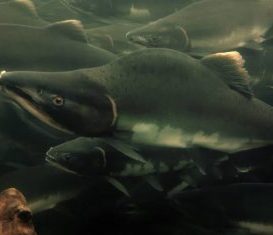
Prince William Sound Pink salmon fishery back in business
Pink salmon commercial harvests are still below forecasts, but even with no prospect of rain predicted so far until Aug. 22, the catch in Prince William Sound rose from 17.6 million to 22.2 million within the past week. Preliminary harvest figures posted by the Alaska Department of Fish and Game showed that 22,904,000 pinks comprised the bulk of the overall Prince William Sound harvest as of Aug. 14. The rest of the overall catch to date of 30.5 million fish in the Sound’s commercial harvest includes 5,026,000 chum, 2,526,000 sockeyes, 18,000 Chinook and 15,000 coho salmon. >click to read< 13:13
Commercial Snapper limit announced in the South Atlantic
 Fisheries officials have announced a reduction in the daily trip limit for the commercial harvest of vermillion snapper in the South Atlantic. Effective March 2, the harvest is reduced from 1,000 pounds gutted weight to 500 pounds gutted weight, according to information from NMFS
Fisheries officials have announced a reduction in the daily trip limit for the commercial harvest of vermillion snapper in the South Atlantic. Effective March 2, the harvest is reduced from 1,000 pounds gutted weight to 500 pounds gutted weight, according to information from NMFS NOAA Fisheries. NOAA Fisheries NMFS has determined 75 percent of the January-June quota will be landed by March 2. Read the rest here 08:27
DNR Question of the Week – Is there commercial fishing in Minnesota?
A: Commercial fishing in Minnesota for walleye and other game fish was eliminated in 1983. Today, commercial harvest is mostly limited to rough fish such as common carp, buffalo and freshwater drum. These fish are harvested primarily using large seine nets up to 3,000 feet long and 20 feet deep. Read the rest here 10:18

































